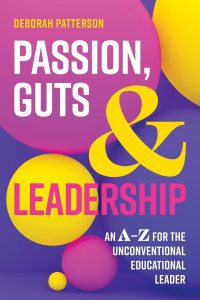As an educator, school holidays provide a precious opportunity to step back, recharge, and dive into some of the pleasures you don’t have time for during the term. For me, that’s reading.
The following three books are some of the most read books in the world of leadership and education. Here are my bite-sized summaries of these enlightening reads, each offering valuable insights for educators and leaders alike.
Creative Schools by Ken Robinson and Lou Aronica
In Creative Schools, co-authored by Ken Robinson and Lou Aronica, the central message urges us to reconsider the traditional education system, which was not designed to foster creativity. This system, originating from the past, primarily aimed to produce a workforce capable of generating value for industrialized societies. It inadvertently initiated the exploitation of workers and imposed rigid, one-size-fits-all approaches on students.
Robinson and Aronica’s book reveals that individuals absorb knowledge uniquely, challenging the notion that all students should excel in the same way. It highlights that schools often overlook the innate talents of students due to their adherence to a system that treats everyone as if they were uniform robots.
Furthermore, the book questions the practice of grouping students solely by age rather than by their individual abilities and interests. This mismatch between the system and the needs of students often leads to boredom and disengagement in the classroom.
Practical Tip for Educators: Encourage peer teaching. Students often learn best from their peers, especially those who have recently mastered a skill. Delegating teaching tasks to these students not only reinforces their understanding but also helps bridge the gap between learners.
The 5:00 AM Club by Robin Sharma
In The 5:00 AM Club, Robin Sharma introduces a transformative practice aimed at owning your morning to elevate your life. This practice centres around the 20-20-20 formula, a method he developed after working with numerous successful individuals, including billionaires and industry titans.
The formula is as follows:
- 20 Minutes of Move (5:00 AM to 5:20 AM): The first pocket of the morning routine involves physical activity. Moving at this time helps release serotonin, dopamine, and nor epinephrine, enhancing mood, pleasure, focus, and metabolic rate. It jumpstarts your day with positive energy.
- 20 Minutes of Reflect (5:20 AM to 5:40 AM): The second pocket is dedicated to reflection and intentionality. During these 20 minutes, you can engage in journaling, visualization, meditation, prayer, or simply contemplate how you want to live your day. It’s about setting a deliberate and conscious tone for your day.
- 20 Minutes of Grow (5:40 AM to 6:00 AM): The final pocket emphasizes personal growth. Spend this time reading from a biography, business book, or philosophical text. This continuous learning fuels your personal development and keeps you in a state of growth.
The 5:00 AM Club” not only introduces a powerful morning routine but also encourages individuals to reclaim control over their mornings and, by extension, their lives. It emphasizes the significance of self-discipline and intentionality, setting a positive tone for each day.
Practical Tip for Educators: Consider setting your alarm half an hour ahead to create an illusion of extra time. Remove technology from your bedroom to reduce distractions. The goal is to cultivate a morning routine that allows you to start your day with intention and focus.
The 7 Habits Of Highly Effective People by Stephen R. Covey
In The 7 Habits Of Highly Effective People, Stephen R. Covey presents a holistic framework for personal and professional effectiveness. These seven habits provide a roadmap for achieving success in various aspects of life.
Habit 1: Be Proactive Take proactive control of your response to the world. Instead of reacting to external stimuli, focus on what you can control: your actions, attitudes, and behaviours.
Habit 2: Begin with the End in Mind Start every task with a clear understanding of the desired outcome. Define your goals and work towards them systematically.
Habit 3: Put First Things First Prioritize tasks based on importance, not urgency. Focus on activities that align with your goals and values.
Habit 4: Think Win-Win Always look for mutually beneficial solutions in interactions. Seek agreements and relationships where all parties can win.
Habit 5: Seek First to Understand, Then to Be Understood Build stronger relationships by genuinely understanding others. Practice empathetic listening before expressing your own viewpoint.
Habit 6: Synergize Create powerful synergy by fostering the open exchange of ideas and collaboration. Recognize that the collective effort often yields superior results.
Habit 7: Sharpen the Saw Take time for self-renewal and personal growth. Regularly invest in your physical, mental, emotional, and spiritual well-being.
For educators, these habits serve as a powerful framework for personal and professional growth, providing guidance on how to navigate the complexities of teaching and leadership while fostering a positive and productive learning environment.
Practical Tip for Educators: Internalize these habits and work on cultivating a commitment to them over time. Consider creating a list of qualities you want to improve and track your progress week by week. Recognizing your accomplishments and continually striving for improvement can lead to a more effective and fulfilling life.





